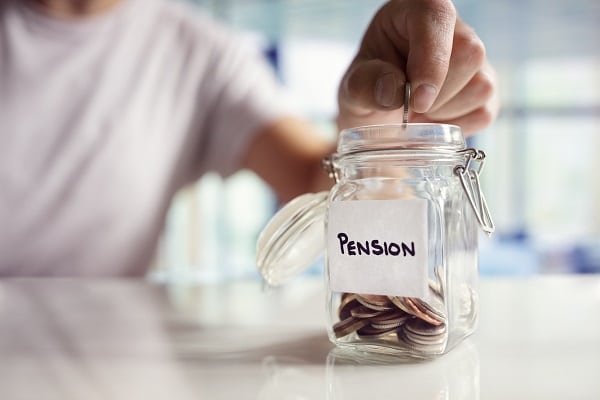Amidst many opinions on emergency fund amounts, here’s the truth. It depends on your financial circumstances. Your discretionary spending and savings for regular bills should be in the bank.
Since emergency money became more important in the COVID crisis, the approach has changed. Whatever feels necessary and comfortable going forward, choose that.
If you’re wondering about your savings goal and on-hand cash, this article has everything. Regardless of whether you’re still working or retired, funds for an emergency cannot be overlooked. So, take a look below.
One can handle many transactions through these accounts. If you have sufficient cash to withdraw for general expenses and pay bills, checking accounts are helpful.
David Ramsey is a financial expert who suggests that the buffer amount should satisfy you. But, it shouldn’t result in overdraft fees only because you’re tempted to overspend.
Savings Money
It depends on your budget. Since these accounts do not let you withdraw frequently, they only receive deposits. Therefore, you cannot carry out more than six withdrawals in a month. For your emergency money, there’s a different place.
Amid the pandemic, however, the limitation is removed. So unless you have a savings goal for a Disneyland vacation with family, you’re free to make unlimited transactions. But, not all banks are to implement this policy. So, visit your bank to know more.
Managing Accounts While Working
Life can throw a curveball anytime. Everything’s unpredictable, and the pandemic has proved it. In such times, keeping your accounts open and handling them can be tedious. Job loss caused for many individuals due to the economic slowdown is a concern.
Moreover, stock markets have turned volatile. It’s a matter of worry for investors. The longevity of your retirement savings and current budget can face turmoil. No wonder cash on hand is the only way out of anxiety.
Financial experts have emphasized emergency money for years. During your working years, savings are essential. However, after retirement, it’s more important to have a cash cushion for daily expenses. This section focuses on working account holders. The next part is set apart for retirees.
What Is A Rule Of Thumb?
An emergency fund keeps your financial goals on track. That is its primary purpose. Change in income for a period or a job loss are situations where these funds help. It may even cover unanticipated, significant expenses that might be out of your budget.
A rule of thumb is to save 1000 dollars for an emergency. As a starter, you must do it. Then, gradually, if your partner’s earning as well, save enough for three to six months.
Emergency Money
Having cash on hand, you need not turn to your retirement accounts. Likewise, for paying penalties and taxes, you don’t need to overload your credit cards.
If your income is less predictable, set aside savings money for around six months. It’s usually beneficial for people in commission-based or freelance work. Suppose you withdraw the emergency amount for buying products and services. Don’t let it stay empty. Start building up again!
On Being A Retired Account Holder
After your job years are over, there are no issues like a student loan. But, health and other essentials turn into a matter of concern. So, if you recently retired and know little about savings, give a read below.
Savings Money Required After Retirement
Retired people have a different need for cash on hand. It’s their money separate from the accounts open in the bank. Other savings and checking accounts (regular shopping) are not the same to them.
To have money in hand is more like a cash cushion. Sometimes, retirees refer to this money as their “sleep at night amount.” So, one shouldn’t consider it their emergency fund.
Here comes a term, a financial product. It’s more like an instrument that lets a person either borrow money or make a financial statement. It means loans, credit cards, bonds, and shares are all financial products. Term deposits or saving money also comes under this instrument.
Financial Products In Detail
Short-term bond funds act as these cushions. One can make it in money market accounts. The savings account also holds this on-hand cash for those who’ve retired. Tax-free short-term funds and a certificate of deposit also carry these amounts.
Those in a higher tax bracket can make use of these certificate deposits. However, one must note that mutual fund investments are not like bank products. They are subject to market risks and aren’t FDIC-insured. So, if there’s an extended down market, one can use this financial product as an alternative.
You need not sell investments from these money market accounts. So, there won’t be any loss if you withdraw instead on any business day. Generally, market crashes require five years to recover. The 2009 global financial crash and the technology bubble crash of 2002 lasted for around two-and-a-half years.
The Right Way To Invest
Retirees do not keep all their money in the stock market. It’s because a five-year recovery isn’t that smooth, after all. Experts suggest you take a more balanced approach after your retirement.
Around 45 to 65 percent can be invested as a certificate of deposit. These financial experts created a hypothetical portfolio of 40 percent bonds and 60 percent stocks. During the last two crashes, their money recovered within two years.
Money Market And Cash On Hand
A cushion or contingent cash account covers the expenses of around two years. It’s only applicable if you are an account holder with money for everyday expenses.
As for both retirees and working, you are declining money market accounts can cause anxiety. A financial shock is as much emotional trouble for a college student as a man in his 60s. So, having cash on hand is always essential. It’s your emergency fund at home. Using this amount, you can weather and control these uncertain times.
In A Nutshell
During financial stress, an emergency fund serves as your safety net. It is suggested you set aside a thousand dollars for emergencies while working or as a college student. It’ll cover around 3-6 months of expenses. Then, after retirement, one may consider a certificate of deposit that would cover 1-2 years of spending needs.
The 50/30/20 Rule
50/30/20 is an ever-popular rule. It was introduced by Senator Elizabeth Warren in her book ”All your worth.” When it comes to your emergency money and general management, this simple rule helps.
Fixed costs (50%)
There are almost half of your expenses fixed. You cannot avoid the internet, water, car, electricity, and mortgage bills. These are the products and services you essentially need. So, there’s not much choice other than to pay through your debit card every month.
30% Discretionary Money
It’s the money used on what you want (not essentially what you need). Maybe you can draw a line of credit on that to save something. Most planners consider food in this category. You always have an option between eating at home or a restaurant.
Name or generic brand; organic ingredients or a can of soup. These are your choices. Although many financial experts say 30% is high, it varies. Opting for a spot where you’re charged a fee versus a free place makes all the difference.
Financial Goals: 20%
It’s an intelligent future savings goal system. If you have a family and a retirement plan in life, financial goals are essential. Set aside 20% of your monthly income for any hard times that might be ahead. IRA is a financial product you can opt for. But if you don’t have an emergency fund yet, it’s best to create that first.
Conclusion
There’s often a dilemma between the amount of cash on hand one should keep. The two primary approaches here, Ramsay’s method and the 50/30/20 plan, are pretty beneficial. So, it doesn’t matter if you’re working or are retired. As long as you’re a rule of thumb for money management, you always have enough.

















